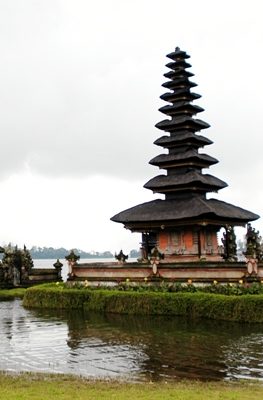Published on March 9, 2015
Almost everyone has been playing with a toy called top, or spinning top, in his or her youth. I still vividly remember my clumsy efforts to attach the rope around its axis to pull it quickly, since it is the rapid unwinding of the string that sets the top in motion. But that’s long time ago and you don’t see it played often nowadays in the western hemisphere.

Traditional spinning top with rope; Source: htpp://www.jpeg.ebay.com/itm/131155193279
However, traveling through South East Asia, you will be surprised to see top-spinning vividly alive, not only as a children’s play, but also, and in particular as a sport.
For instance, in Malaysia, Indonesia and Brunei Darussalam, it is a traditional game named “Gasing”, widely played by the Malay people. You could also encounter it in the Philippines and Viet Nam, under the names “Trumpo” and “Quay”, respectively.
The name Gasing is given to both, the topspin and the sport itself. The game is started by first drawing a circle on the floor to define the area within which the top must be thrown in and kept spinning. The player whose spinning top out-spins the others within the circle wins the game. It can be played individually or in teams of four.


Source: htpp://www.imgarcade.com; Source; http://letterhash.blogspot.com
Originally, it was introduced by traders from the Middle East around 450AD. The name in Malay language means spinning of tops; the name is derived from the words “Ka” from “Kayu” (Wood) and “Sing” from “Pusing” (Spin). Eventually, “Ka-Sing” became “Gasing”.


Gasing production and product; Source: http://malaysiangames.blogspot.com/p/gasing-and-tarik-upih.html
Traditionally, it is made of different types of wood or hard fruit, iron and lead. Nowadays however, they are often built of plastic and by modern manufacturing processes that allows tops to be set in motion by a simple rotation of the fingers and wrist without need for string or rope.
Both adults and children play the game. The ones played by kids are much smaller and weigh from 0.1 to 0.5kg, while bigger or giant Gasings weigh approximately 4 to 5kg; those wooden tops are as big as the size of a dinner plate. Playing them require great skill, strength and speed. First comes wrapping the rope around the finger or hand properly. The end of the rope should be tied around the wrist or the pink finger, to ensure the rope doesn’t unravel. Next turns up how to wrap the rope around the top. Since it has a smooth surface, some players roughen the top side to get more grip. The rope has to be winded neatly and tightly for more precision, power and spin.
To have the device gone spinning for a long time, it must be launched firmly, yet carefully. This ensures the top to keep spinning without wobbling or tipping over early. Last, but not least, comes how to scoop up the spinning top. The player has to know in what direction the it spins, in what direction it is going and the timing of when it is supposed to be scooped.


Sources: http://ragamkebudayaanindonesia.wordpress.com and http://bb2008-haigalistic.blogspot.com
The sport is a popular traditional game among the villages in Malaysia especially in Kelantan and Malacca after the rice-harvest, when several villagers challenge each other to the test of skill. In competition, two categories are distinguished: “Last man standing” and “Knockout”. In Last man standing or “Gasing Uri”, the last person to spin the longest wins. In the Knockout or “Gasing Pangkah”, one must knock the top against their opponents to disrupt their movements. Both sides will then scoop up their tops and see who will outlast the other.
Nowadays, the game might not be as common as it used to be in Malaysia and other countries in Asia in general, and in ASEAN in particular. Notwithstanding, it is still pretty much alive. In 2011, during the Borneo Games, it was recognized as an official sporting event. It may not be played as much, but it surely remains popular and played on professional arenas too.
Gasing for everyone: from children’s game to professional sport, from cradle to crypt






